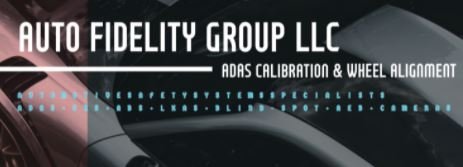Square Peg Round Hole ----- Bad information means more work...
-
Available Subscriptions
-
Have you checked out Joe's Latest Blog?
-
By Joe Marconi in Joe's Blog0 commentsIt always amazes me when I hear about a technician who quits one repair shop to go work at another shop for less money. I know you have heard of this too, and you’ve probably asked yourself, “Can this be true? And Why?” The answer rests within the culture of the company. More specifically, the boss, manager, or a toxic work environment literally pushed the technician out the door.
While money and benefits tend to attract people to a company, it won’t keep them there. When a technician begins to look over the fence for greener grass, that is usually a sign that something is wrong within the workplace. It also means that his or her heart is probably already gone. If the issue is not resolved, no amount of money will keep that technician for the long term. The heart is always the first to leave. The last thing that leaves is the technician’s toolbox.
Shop owners: Focus more on employee retention than acquisition. This is not to say that you should not be constantly recruiting. You should. What it does means is that once you hire someone, your job isn’t over, that’s when it begins. Get to know your technicians. Build strong relationships. Have frequent one-on-ones. Engage in meaningful conversation. Find what truly motivates your technicians. You may be surprised that while money is a motivator, it’s usually not the prime motivator.
One last thing; the cost of technician turnover can be financially devastating. It also affects shop morale. Do all you can to create a workplace where technicians feel they are respected, recognized, and know that their work contributes to the overall success of the company. This will lead to improved morale and team spirit. Remember, when you see a technician’s toolbox rolling out of the bay on its way to another shop, the heart was most likely gone long before that.
-
-
Similar Topics
-
By carmcapriotto
Welcome to the Auto Repair Marketing Podcast with Brian Walker. In this solo episode, Brian discusses the importance of taking massive action during slow business periods.
Drawing from a recent conversation with a shop owner, he shares strategies to combat slow times, including leveraging networking groups like BNI, using your CRM effectively, creating engaging video content, and offering incentives.
Brian also highlights the importance of personal health and well-being, emphasizing that a healthy business owner is crucial for a thriving business.
Tune in for practical tips to help fill your bays and keep your business thriving.
Thank you to RepairPal for sponsoring The Auto Repair Marketing Podcast. Learn more about RepairPal at https://repairpal.com/shops
Lagniappe (Books, Links, Other Podcasts, etc)
Greg Buckley at Buckley's Auto Center : https://www.youtube.com/@BuckleysAutoCare/featured
Charlie's Foreign Car
https://www.youtube.com/@fixingcars
Royalty Auto Service
https://www.youtube.com/@theroyaltyautoservice
Dave’s Auto Center
https://www.youtube.com/@DavesAutoCenterCenterville
How To Get In Touch
Group - Auto Repair Marketing Mastermind
Website - shopmarketingpros.com
Facebook - facebook.com/shopmarketingpros
Get the Book - shopmarketingpros.com/book
Instagram - @shopmarketingpros
Questions/Ideas - [email protected]
Click to go to the Podcast on Remarkable Results Radio
-
By carmcapriotto
The Weekly Blitz is brought to you by our friends over at Shop Marketing Pros. If you want to take your shop to the next level, you need great marketing. Shop Marketing Pros does top-tier marketing for top-tier shops.
Click here to learn more about Top Tier Marketing by Shop Marketing Pros and schedule a demo:https://shopmarketingpros.com/chris/
Check out their podcast here: https://autorepairmarketing.captivate.fm/
If you would like to join their private Facebook group go here: https://www.facebook.com/groups/autorepairmarketingmastermind
In this podcast episode, Coach Chris Cotton from Auto Fix Auto Shop Coaching emphasizes the importance of seeking inspiration and innovation outside the auto repair industry. He challenges shop owners to break out of their comfort zones and learn from disruptors in fields like hospitality, retail, healthcare, and fitness. Chris discusses how adopting customer-centric approaches and technologies from these industries can transform auto repair businesses.
For instance, he highlights how the hospitality industry's focus on exceptional customer service and personalized experiences can be mirrored in auto repair shops to build stronger customer relationships and loyalty. Similarly, he points out how retail's use of data analytics and customer feedback can help auto shops better understand their clients' needs and preferences, leading to more tailored services and improved satisfaction.
Chris also explores how the healthcare sector's emphasis on transparency and trust can be applied to auto repair, fostering a more open and honest communication channel between mechanics and customers. Additionally, he draws parallels with the fitness industry's use of subscription models and community-building strategies, suggesting that auto repair shops could benefit from implementing similar membership programs to ensure steady revenue and customer engagement.
He encourages proactive learning, attending conferences, and networking with professionals from other sectors. By stepping outside the traditional boundaries of the auto repair industry, shop owners can gain fresh perspectives and innovative ideas that can set them apart from competitors.
The episode concludes with practical steps for implementing these innovative ideas to enhance customer experience and drive positive change in auto repair shops. Chris provides actionable advice on how to start small, such as introducing a customer feedback system or experimenting with new service packages, and gradually scale up these initiatives. He also stresses the importance of continuous improvement and staying adaptable to evolving customer expectations and industry trends. By embracing these strategies, auto repair shops can not only improve their operations but also create a more engaging and satisfying experience for their customers.
The power of looking outside our industry (00:01:05)
Exploring the importance of learning from disruptors in other fields to stay ahead of the curve.
Innovation at the edges (00:03:26)
Discussing how innovation often occurs at the edges of industries and the benefits of looking beyond traditional practices.
Examples of disruptors in other industries (00:04:37)
Exploring examples from healthcare, food and beverage, connected fitness apps, and education to draw insights for auto repair business.
Implementing ideas in auto repair shops (00:09:41)
Strategies for implementing ideas from other industries, such as networking, adopting technology, experimenting with service models, focusing on customer experience, and empowering the team.
Connect with Chris:
[email protected]
Phone: 940.400.1008
www.autoshopcoaching.com
Facebook: https://www.facebook.com/
AutoFixAutoShopCoachingYoutube: https://bit.ly/3ClX0ae
#autofixautoshopcoaching #autofixbeautofixing #autoshopprofits #autoshopprofit #autoshopprofitsfirst #autoshopleadership #autoshopmanagement #autorepairshopcoaching #autorepairshopconsulting #autorepairshoptraining #autorepairshop #autorepair #serviceadvisor #serviceadvisorefficiency #autorepairshopmarketing #theweeklyblitz #autofix #shopmarketingpros #autofixautoshopcoachingbook
Click to go to the Podcast on Remarkable Results Radio
-
By carmcapriotto
Thanks to our Partner, NAPA Autotech
Matt Fanslow and guest Tanner Brandt discuss the recent assassination attempt on former President Donald Trump, the state of the country, and the impact of political polarization. They explore how media influences public opinion and the role of political figures in shaping societal views. The conversation highlights the need for civil discourse, critical thinking, and seeking diverse perspectives to counteract the echo chamber effect of social media. understanding in political discussions.
Show Notes
The assassination attempt on Donald Trump (00:01:19) Reactions and media influence (00:03:07) Civil discourse and collaboration (00:06:14) Impact of political polarization (00:09:24) Media influence and party allegiance (00:13:15) The 24-hour news cycle and political leanings (00:17:31) The influence of social media algorithms (00:21:19) Creating echo chambers and misinformation (00:25:11) Social media's impact on the youth and political divide (00:30:17) The need for leadership and setting an example (00:33:24) Raising Respectful Kids (00:34:24) Generational Toughness (00:35:13) Understanding Power Dynamics (00:36:09) Real Life vs. Online Behavior (00:37:36) Media Influence and Perception (00:41:16) Seeking Positive News (00:42:50) Finding a Hobby (00:45:18) Avoiding Politicization (00:49:05) NASTF (00:49:55) Congress Behavior (00:51:15) Congressional Discussions (00:52:32) Ego in Politics (00:55:24) Economic and Social Issues (00:59:02) Interest Rates and Younger Generations (01:00:44) Healthcare and Future Concerns (01:02:24) Local Governance and Youth Leadership (01:05:26) Caring for the Community (01:06:34) Striving for Better (01:07:38) Social Media Impact (01:08:46) Forming Opinions (01:10:06) Media Influence (01:11:14)
Thanks to our Partner, NAPA Autotech napaautotech.com
Email Matt: [email protected]
Diagnosing the Aftermarket A - Z YouTube Channel HERE
Aftermarket Radio Network: https://aftermarketradionetwork.com/
Click to go to the Podcast on Remarkable Results Radio
-
By carmcapriotto
Today, we're excited to have a special guest with us, Arun Kumar, the owner of Driven Auto Care.
In this episode, we’ll explore Arun's unique approach to defining and measuring customer loyalty, creating positive first impressions, and the crucial role of communication and transparency in client retention.
We'll also discuss the impact of personalized service, the importance of community engagement, and strategies for handling negative reviews.
Plus, Arun will share his insights on emerging trends in customer loyalty and his top-tier advice for shop owners.
Thank you to RepairPal for sponsoring The Auto Repair Marketing Podcast. Learn more about RepairPal at https://repairpal.com/shops
Lagniappe (Books, Links, Other Podcasts, etc)
We Are Driven Podcast - https://podcasts.apple.com/us/podcast/we-are-driven-podcast/id1669356544
Driven Diary Youtube: https://www.youtube.com/@drivendiary
Arun Coumar Linkedin Post: https://www.linkedin.com/posts/aruncoumar_there-are-11-automotive-shops-in-the-plaza-activity-7206990233949642753-xcVF?utm_source=share&utm_medium=member_desktop
How To Get In Touch With The Guest
Arun Coumar: https://www.linkedin.com/in/aruncoumar/
Show Notes
1. Define Loyalty:
How do you define loyalty in the context of your auto repair business? How do you measure customer loyalty at Driven Auto Care?
2. First Impressions:
Do you believe first impressions contribute to customer loyalty? Share some thoughts on how a repair shop can create a positive first impression.
3. Communication and Transparency:
Does communication and transparency play a role in retaining clients? What best practices do you believe in or promote to increase customer loyalty?
4. Personalized Service:
Do you believe personalized service impacts retention? How can shops implement personalized service?
5. Business Operations and Rebranding:
Discuss the rebranding and renovation efforts at Driven Auto Care. How have these efforts contributed to creating a loyal customer base?
6. Technology and Tools:
Does technology and the use of any specific tools/programs help you stay in touch with customers and get them back into the shop? Share any specific tools or programs you use at Driven Auto Care.
7. Community Engagement:
Talk about engaging in the community to build your reputation and a loyal customer base. What community involvement initiatives does Driven Auto Care participate in?
8. Handling Negative Reviews:
How do you feel the way a negative experience is handled can play into customer loyalty? Share any strategies or approaches you use to turn negative experiences into positive outcomes.
9. Trends in Customer Loyalty:
Do you foresee any trends emerging in customer loyalty and retention within the auto repair industry? What are you seeing in terms of customer expectations and behaviors?
10. Biggest Lesson Learned:
Share your biggest lesson learned in customer retention at Driven Auto Care.
11. Top-Tier Advice:
What’s your one top-tier piece of advice to help other shop owners build customer loyalty?
How To Get In Touch
Group - Auto Repair Marketing Mastermind
Website - shopmarketingpros.com
Facebook - facebook.com/shopmarketingpros
Get the Book - shopmarketingpros.com/book
Instagram - @shopmarketingpros
Questions/Ideas - [email protected]
Click to go to the Podcast on Remarkable Results Radio

-
By DUFRESNES
Premium Member Content
This content is hidden to guests, one of the benefits of a paid membership. Please login or register to view this content.
-
-
-
Our Sponsors













Recommended Posts